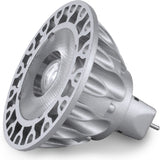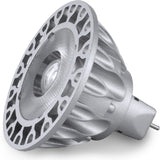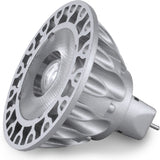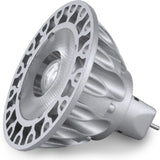Lower Maintenance Costs - Benefits of LED Retrofits
Posted by Nick on for ProLampSales
Yesterday, we looked at some of the benefits of lighting retrofits, mainly from the perspective of utility companies. The high cost of maintenance and new construction makes energy subsidies and rebates attractive for power companies, which can reduce the load on their legacy systems by encouraging residential and commercial end users to switch from inefficient technology to newer LEDs and fluorescent bulbs and fixtures.
Taking advantage of energy rebates is also attractive from the viewpoint of businesses, who will enjoy lower up-front costs to switch to more energy efficient technology, as well as long-term savings in energy bills. But saving money on direct power consumption is not the only benefit of a lighting retrofit.
Types of Maintenance Costs
Another main benefit is the subject of this article: maintenance costs. These expenditures are commonly rolled into the Maintenance/Repair/Operations expense account, but few accounting departments or building managers truly understand the full cost of purchasing and maintaining lighting equipment.
Maintenance costs for an installed lighting system fall into two types: repairs and replacement of existing lighting-related equipment, and direct costs for lamps and ballasts.
Forgotten Costs in Lighting System Maintenance
In terms of the first type of cost, repairs and replacement of lighting-related equipment, a number of hidden costs crop up that never show up in an electricity bill. These include lenses or troffers for fluorescent lamps, sockets of all types, starters for HID and metal halide lamps, adjusters for recessed cans, and track lighting heads. Electrical equipment like transformers, fuses, and capacitors are also included here, as they are essential to the functioning of a lighting system.
These costs may not decrease much by retrofitting old fixtures to LED or by replacing bulbs. Lenses will still need to be cleaned, and electrical components still replaced.
Direct Bulb & Ballast Replacement Costs
The second category is the most visible lighting expense, as it relates to direct replacements of bulbs and ballasts. Whether with group relamping or spot relamping, the larger and more complex the system, the greater the costs when it comes to replacing these.
At this point, purchasing LED replacement bulbs may not make economic sense in all cases. The latest-generation fluorescent tubes, for instance, last almost as long as LEDs for a fraction of the cost. The same holds true for many high intensity discharge and metal halide lamps, if LED replacements are even available.
However, replacing incandescent and halogen bulbs that are common in many commercial and industrial institutions will reap the greatest benefit. These types of LEDs have decreased in price by up to 90% from a few years ago, the energy savings are remarkable, and labor costs to replace 1,000 or 2,500 hour lamps compared to 25,000 hour lamps is considerable.
Labor Savings Key for Retrofit Projects
For institutional, commercial and industrial businesses, labor costs may be the key factor in the decision to switch to LED fixtures and lamps. The "ladder time" costs per fixture for maintenance personnel to change a failed incandescent, halogen or HID light bulb can significantly exceed the energy savings achieved by replacing existing bulbs to LED. When calculating the ROI for any type energy efficient lighting retrofit, maintenance costs should not be overlooked.
Retrofits Have Proven Cost Effective
The question that building maintenance and property managers need to start asking themselves is whether the cost of maintaining the current system will outweigh the price of a retrofit. When LED prices were high and alternatives did not exist for common fluorescent tubes and fixtures, the decision was easy.
For a case study, see the GE Lighting retrofit of the Marriott International headquarters, which was expected to reduce electricity usage by 66%. The project utilized utility rebates to achieve a two-year payback for the initial investment, which saw replacement of HID systems, installation of motion sensors, and installation of 7 watt LED bulbs in place of 65 incandescent watt bulbs in interior hallways.
The InterContinental Hotel in San Francisco provides another case study. Inefficient halogen lamps were replaced with LED MR16 bulbs, while 75 watt halogen PAR30s were replaced with 11 watt LED PAR30 lamps.
However, as more LED products have hit the market in the last few years, alternatives exist for T8 tubes, from individual LED T8s to LED flat panels that completely replace a fluorescent fixture. Lighting manufacturers are also addressing the problem of existing ballasts with LED by making ballast-compatible products or bypassing the ballast entirely.
A few years ago, our LED fixture line would have been prohibitively expensive, if the items were available at all. Now, commercial building managers can find vapor tight fixtures, troffers, high bays, wall packs, recessed and surface downlights, and exit and emergency lights of all kinds in LED for low prices close to cost from the manufacturer.
Reducing maintenance costs throughout an organization is another of the prime benefits of retrofitting a building to LED.
- Posted in Energy Efficiency, Retrofits
Featured Products (View All)
0 Comments




